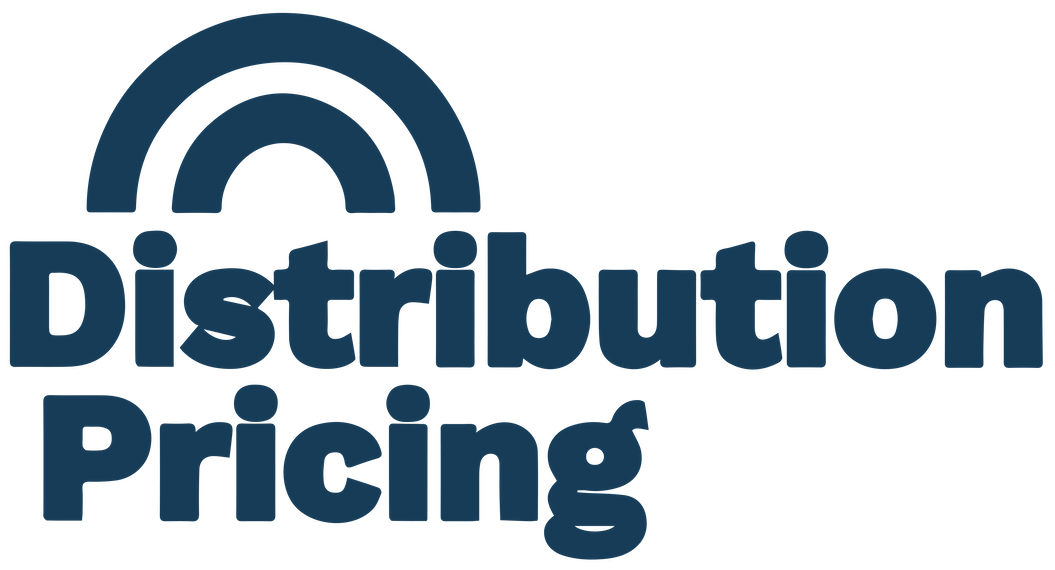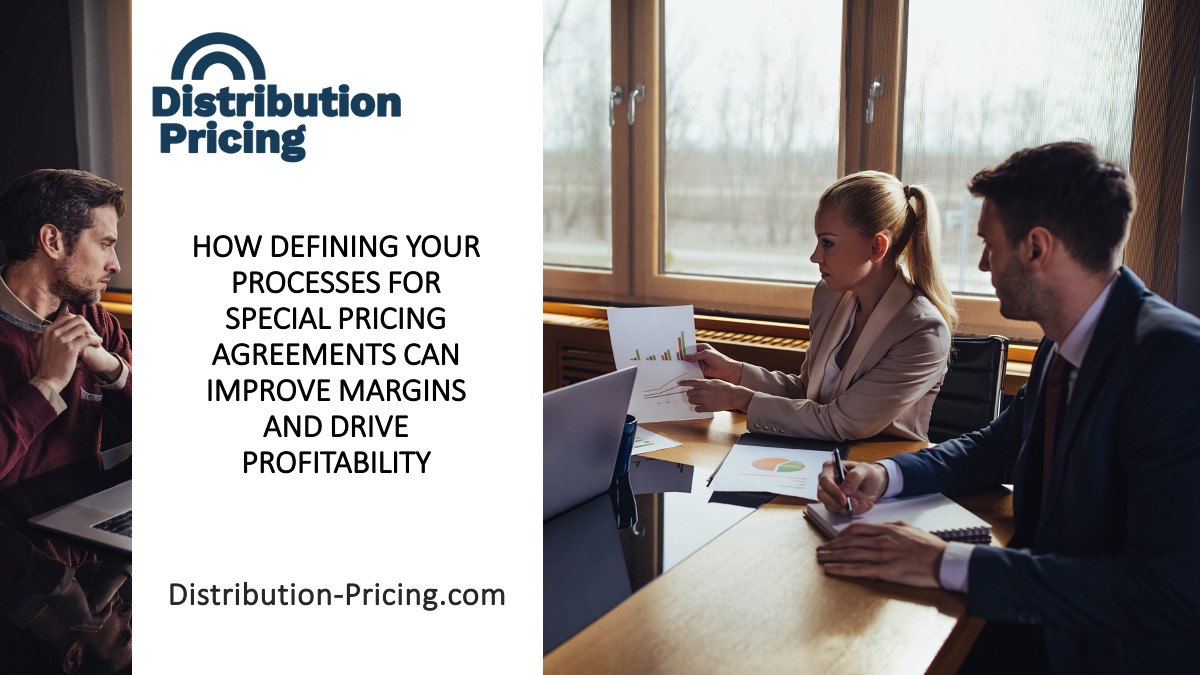Your passion for distribution pricing is what fuels our mission to deliver the most valuable and actionable insights to your inbox.

How Distributors Can Drive Profitability with More Effective Discount Management
How do you decide on your discounting strategy? Are you following where the data leads you or are you making seemingly random guesses at what your customers will pay? Do you take profitability into account and make that information readily available to your sales reps? Managing discounts effectively is an important aspect of your pricing strategy, but it often falls on the shoulders of sales reps who are working without optimization data. Without careful oversight and strategic implementation, discounts can creep into your sales, eating away at your profitability. The key is to leverage analytics tools, customer segmentation, and strategic pricing decisions to maintain a healthy profit margin.
We asked Darius Fekete, Director of Value Acceleration at Vendavo, a global market leader in B2B price management and commercial excellence solutions, to share how distributors can drive profitability by more effectively managing their discounts.
Discounts Emerge from Various Sources
“In the distribution industry, discounts can pop up in many situations,” said Fekete. “Unfortunately, they don’t always consider real profit drivers like buying behavior, segmentation, customer attributes, product lines, deal size or other important factors. The biggest concern is that these discounts might become long-standing price exceptions because of poorly calculated pricing contracts or even simply logging the last stated price in the ERP system.” The complexity of discounting can result in many different pricing records which can add to the administrative headaches of your pricing and sales teams.
“A lot of legacy ERP systems don’t have sophisticated price optimization,” said Fekete. “As a result, your commercial pricing terms can be inconsistent and unprofitable, but no one knows how to fix the situation. Sometimes the distributor gives up and sets a standard discount term as a high-level guideline. This only leads to less flexibility in terms of price optimization and profit.”
Complicating the situation even further, for most distributors the sales teams wield full discounting authority. “Sales reps often set unique exceptions for each of their clients,” said Fekete. “Most companies who lack price optimization let their reps override pricing directly into the ERP system without any control or regular review.”
According to Fekete, pricing reviews should happen on a regular basis, but are difficult to manage without the right technology – so many distributors skip the reviews entirely. That can mean that sales teams forget why the discount was given in the first place. “Perhaps a sales rep gave a one-time discount to a customer to win a larger deal or smooth over a customer service issue,” said Fekete. “But then that rep leaves the company, and the next rep simply looks up the previous pricing and applies it to every deal going forward for that client. This kind of situation happens more frequently than anyone wants to admit.”
Some distributors have avoided price optimization because they want to avoid outside influence and cost in their pricing decisions. “Distributors are often wary of outside consultants with big fees and little connection to their clients,” said Fekete. “They tend to favor the opinions of the sales reps in their organization because they are the closest drivers of growth goals, but without data this only perpetuates the cycle of discounting.” What is needed is a methodical approach to both price setting and discounting using a solution that allows the distributor to fully own their own pricing strategy.
Fekete suggests six ways distributors can get a handle on discounts to drive more profit and growth.
1. Beware of Unanalyzed Discounts
“One-time discounts can become perennial simply because they were entered once into your order entry screen,” said Fekete. These unanalyzed discounts can silently erode your profit margins. It is essential to regularly review all discounts and evaluate their impact on profitability.
“The problem with unanalyzed discounts is that they often go unnoticed,” said Fekete. “They become part of the daily business operations, and without proper scrutiny, their impact on the company’s bottom line can be overlooked. This lack of awareness and control over discounts can lead to significant financial losses over time.”
Pricing optimization helps you mitigate the risk on a regular basis. “Sometimes it is necessary to discount,” says Fekete, “you just want to know that you are offering the right discount in the right situation and not changing policy forever based on one sale.” Regular reviews help you identify any discounts that have become perennial without justification. It also provides an opportunity to reassess the relevance and effectiveness of each discount. “There are reasons to discount, there are also reasons not to discount. Maybe you have a discount that was helpful in getting a new customer several years ago, but isn’t needed anymore. Maybe certain products for infrequent customers could have a discount reduced without impacting purchasing behavior.”
Analyzing your discounts and overrides on a regular basis helps you identify trends and patterns that could be important to driving new profits. “You might find out that a certain type of discount drives volume, but that requires some analysis” says Fekete. “Or maybe a discount that your reps use all the time is ineffective and is a kind of silent killer of profits. Data lets you adjust your strategy to optimize both profit and growth.”
2. Employ Smaller Product and Customer Segments
Fekete suggests that rather than having a blanket discount policy, distributors should consider using smaller product and customer segments based on behavior to drive more relevant pricing decisions. This allows for personalized pricing strategies that can maximize profitability by targeting specific customer behaviors and preferences.
“If your pricing guidelines are in sync with your customer’s willingness-to-pay, you can significantly reduce the need for discounts and exceptions,” said Fekete. “An effective segmentation model should encompass all product and customer attributes that are relevant to transactions. The challenge lies in devising a structure that is detailed enough to provide valuable insights, yet not so complex that it becomes cumbersome to manage.” Fortunately, technology around pricing and segmentation has revolutionized the process. “Segmentation projects that once took months can be accomplished very quickly today. You can see detailed segmentation information in a few clicks and then facilitate strategic discussions about ways to improve.”
To begin, consider establishing a robust structure for categorizing product groups. Your goal here is to provide a more structured way to categorize products and ensure consistency that matches market expectations around the brands and lines you carry. “Many distributors grapple with the issue of inconsistent product hierarchies or even selling items that fall outside their standard product lines,” said Fekete. “With technology it can be straightforward to manage these unregulated products and harmonize supplier product hierarchies.
Similarly, it is important to classify your customers in meaningful ways that impact pricing. This goes beyond basic demographics such as size or location and should consider actual buying behavior. “Two customers may look the same, and yet have different purchasing behavior or price sensitivity,” said Fekete. “By understanding who your customers are and what they value, you can tailor your pricing strategies to better meet their needs and expectations.”
3. Improve Negotiations with Analytics
Analytics tools can provide profitable and optimized price ranges for discount negotiations. These tools can help you understand the price sensitivity of different customer segments and how discounts affect their purchasing behavior. By using data-driven insights, you can make more informed decisions about when and where to offer discounts.
“Discounts are a fact of life,” said Fekete, “the goal shouldn’t be to eliminate them but instead foster an environment of empowerment by permitting room for negotiation within a defined pricing framework.” Providing analytical assistance to reps can give them the ranges they need to operate profitability and still close deals. “Let’s say a competitor just launched a promotional offer and you need to pivot a little bit to compete. That is a situation that falls outside your standard pricing model but with analytical tools, your reps can discount appropriately instead of just making guesses.”
To avoid reliance on intuition-based pricing, establish stretch-target-floor levels. This gives your reps the guidance they need to operate within your pricing framework and still be flexible enough to win deals.
- Floor pricing refers to the minimum price below which a product or service cannot be sold. It is essentially a safeguard to prevent prices from falling too low and thus ensures that a distributor can cover its costs and maintain a baseline level of profit. There may be reasons to price at the floor to win a deal, but there is rarely a reason to price below the floor because such business is unsustainable.
- Target pricing is pricing where the model drives the most profitability. It helps your reps negotiate a price that allows you to achieve your desired profit margin based on your segmentation. This should be where your reps are aiming in most deals.
- Stretch pricing is a strategy where reps believe they can negotiate a price higher than the average market price or your target levels. It is typically used for products or services perceived as premium or high-quality and allows reps to maximize their profits on each sale. This strategy can even create a perception of higher value among certain customers. It allows your reps to drive profit in areas that have urgency or strong brand preferences without overcharging.
4. Negotiate Trade-Offs Instead of Long-Term Discounts
Long-term discounts may seem attractive as they can drive volume, but they can also negatively impact profitability over time. Instead of committing to a long-term discount, consider what other trade-offs you can negotiate. For instance, you could offer a temporary discount in exchange for a larger order or faster payment terms.
Fekete points out that negotiating prices often unveils crucial context surrounding the deal. “Maybe there is an urgent need for product delivery on the customer’s end,” said Fekete “Or perhaps they are planning to increase their purchase volume in the future. It’s important to incorporate communication of trade-offs into your discounting strategies.” This approach allows both parties to have a clear understanding that any additional discount is associated with compromises made against other commercial or service terms. Conveying these reciprocal concessions on value is an effective method to prevent the recording of a special discount as a permanent net price.
“Reps should think about trade-offs every time they think about a discount,” said Fekete. Trade-offs offer an excellent mechanism to gradually implement a new discounting structure. For instance, contextual discussions related to customer service levels in association with the deal should ease the transition towards updated pricing. “The best time to discuss other commercial terms with your customers is when you are giving them a discount. Don’t let that opportunity pass. At the very least, the conversation will provide you with valuable insights into their bargaining preferences for future deals.”
Approaching discounts along with trade-offs is a customer-focused approach that can strengthen relationships while optimizing profitability. “These discussions show your customers you want to cater your solutions to their unique needs and preferences,” said Fekete. “Instead of offering blanket discounts, consider customizing your discounts based on specific deal contexts and customer preferences.” You also teach your customers about your own requirements, so they have a more realistic expectation in future negotiations. “It’s a more collaborative approach to negotiation, where both parties are invested in finding a balance between price and value.”
5. Empower Your Sales Teams
Give your sales teams the ability to calculate true breakeven points and conduct deal scoring. This will allow them to understand the impact of discounts on profitability and make informed decisions during negotiations.
“Understanding the business impact is crucial for making effective sales decisions,” said Fekete. “Questions like, ‘What volume of sales is needed to offset an additional discount?’ or ‘How should I price less popular items in a deal if I’ve offered a high-demand product at a competitive price?’ are central to this process.” The leading distributors are arming their sales teams with tools like dashboards, negotiation guidance and pricing recommendations incorporated into their quoting solutions, enabling them to make informed decisions that optimize profitability.
“If your sales reps don’t have access to pricing guidance,” said Fekete, “they tend to just reference the last price in the system. No one really knows if the last price was profitable, it’s just the last price.” Fekete calls this phenomenon, “false anchoring,” where referencing the last price given can make reps believe there was a rationale for the previous discount. “Sometimes reps just respond with a stock discount – I’ll give you your usual 15% — without guidance to tell them if they are acting profitably.”
Enabling your reps with pricing guidance helps them make better discounting decisions, regardless of the last price entered. “Sometimes you need to preserve profits and other times you need a little bit of price improvement and sales flexibility,” said Fekete. “In either case, pricing guidance gives you the ability to improve your bottom line.”
Moreover, according to research by the Harvard Business Review, the majority of sales professionals believe that providing customers with more information helps them make better decisions (“The New B2B Sales Imperative“, 2017, hbr.org). This suggests that understanding the business impact can not only help sales teams make better decisions but also improve the customer experience by providing valuable information that aids their decision-making process.
6. Engage Your Sales Team in Pricing Strategy
Your sales team should feel like they are part of the pricing strategy process. By involving them in decision-making, you can ensure that they understand the reasons behind pricing decisions and are motivated to adhere to them. This can also lead to more innovative pricing strategies as they bring their frontline insights into the process.
“Top-tier distributors have mastered the art of engaging their sales teams in the business planning process,” said Fekete. “They understand that the key to a successful business plan lies in the integration of bottom-up aspirations from sales teams and top-down pricing assumptions. This two-pronged approach allows businesses to pinpoint potential areas for margin improvement.”
To further boost management confidence, these best-in-class companies break down the aggregate output into price-volume-mix effects. This detailed analysis offers a more granular view of business performance, enabling managers to make more informed decisions. “In the case of distributors,” said Fekete, “managing the intricacies of sales pricing is a considerable challenge. The complexity arises from multiple factors such as diverse product lines, varying customer needs, and fluctuating market conditions. To navigate this complexity, distributors need to enhance their capabilities and tools.”
When pricing analysts plot discounts, they should not just present raw data. “Sales reps and executives respond to meaningful insights that explain the rationale behind your pricing decisions,” said Fekete. This could include factors such as competitive dynamics, customer buying behavior, and internal cost structures. “If you give the reps the ‘why,’ behind your pricing strategies, they can help form better and more profitable discounting decisions that match the company strategy.”
Effective discount management requires a balanced approach. While discounts can attract customers and increase sales volume, they need to be carefully managed to ensure they don’t erode profitability. By leveraging analytics, segmenting customers, and engaging your sales team, you can use discounts as a tool to enhance profitability rather than a threat to it.
Editor’s Note: You may also enjoy our article Can Distributors Reduce Price to Attract Customers?



